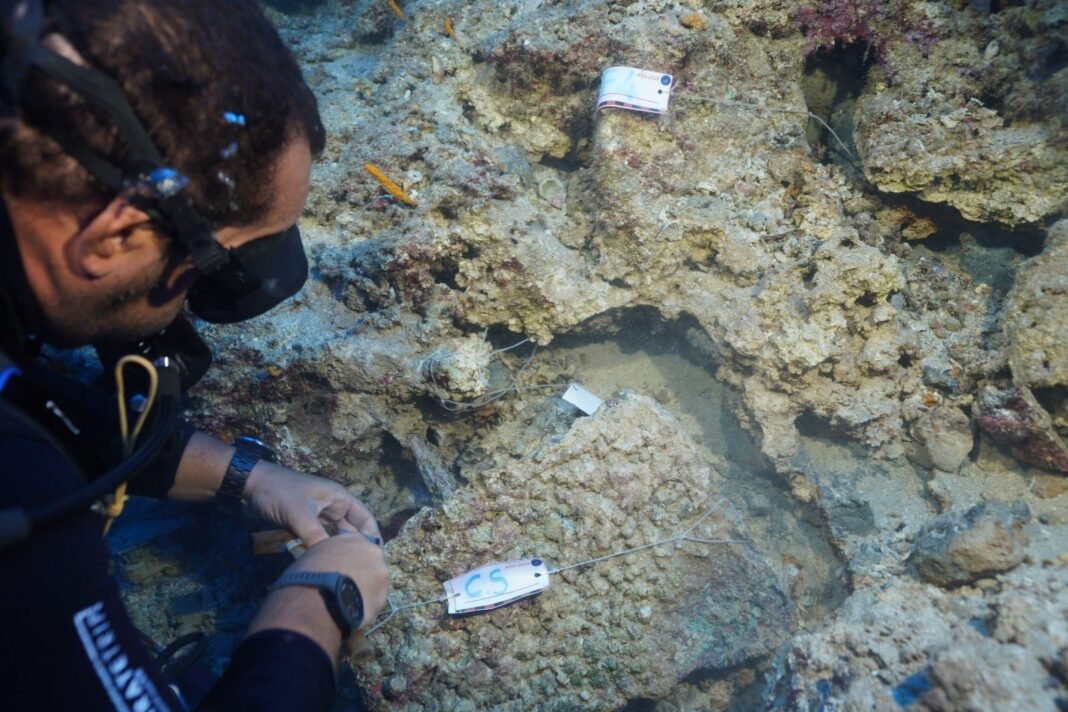
A Bronze Age shipwreck discovered off the coast of Kumluca, Turkey, is offering new insights into early Mediterranean trade and the reach of the Minoan civilization. First located in 2018, the wreck was excavated in stages between 2019 and 2024 by an international team of underwater archaeologists.
Excavation led by Texas A&M and Akdeniz University
The project was directed by Cemal Pulak, vice president of the Institute of Nautical Archaeology (INA) and professor at Texas A&M University, in partnership with Hakan Öniz of Turkey’s Akdeniz University. Work was conducted under the Antalya Museum and the Turkish Ministry of Culture and Tourism.
The wreck rests on a rocky slope between 37 and 53 meters (121 to 174 feet) deep. Initial fieldwork began in 2019 aboard INA’s research vessel Virazon II, which provided decompression equipment and Nitrox blending capabilities for safe diving.
After a two-year pause during the pandemic, major excavation resumed in 2022, recovering dozens of artifacts despite heavy concretion fusing them to the seabed.
Cargo of copper and personal belongings
Researchers uncovered 52 pillow-shaped ingots, 19 disc-shaped ingots, and eight fragments by 2024, along with two lead weights, ceramic shards, a bronze needle, a crushed copper bowl, and a fishhook. Several ingots displayed secondary chisel marks, suggesting reuse or multiple handling phases during trade.
The ingots are believed to have originated from Cyprus, the main copper supplier in the Bronze Age Mediterranean. Similar ingots recovered from the Uluburun and Gelidonya wrecks—as well as from Minoan palaces—trace back to Cypriot mines. However, their varying purity, including high iron levels in some, hints at varying smelting techniques or ore sources.
The incredibly preserved late bronze age Uluburun shipwreck had a carrying capacity of 15-20 tons.
While this is impressive, we have a variety of historical evidence indicating bronze age ships which were ten times and even hundred times larger.🧵 pic.twitter.com/fPPMnCCl1o— LiorLefineder (@lefineder) September 13, 2024
Artifacts point to Cretan connections
One of the most significant finds is a bronze dagger discovered in 2024. The weapon closely resembles “long daggers” used on Crete between 1700 and 1600 BC, suggesting Cretan involvement in the ship’s voyage. Two discoidal lead weights—weighing 22 grams and 45 grams—also match Minoan measurement systems and strengthen the link to Crete.
Akdeniz’in derinliklerinden 3 bin 600 yıllık sır gün ışığına kavuştu. 🗡️
Antalya’nın Kumluca ilçesi açıklarında gerçekleştirilen su altı kazılarında Girit-Minos uygarlığına ait gümüş perçinli bir tunç hançer bulundu.
✨Batık, sadece Türkiye’nin değil, dünya su altı… pic.twitter.com/bgTHiJZop9
— Mehmet Nuri Ersoy (@MehmetNuriErsoy) August 29, 2024
Ceramic fragments, though difficult to date precisely, correspond to amphorae commonly found across the eastern Mediterranean during the Bronze Age. These finds indicate the vessel was active in regional trade networks connecting Cyprus, Anatolia, and Crete.
A ship lost near Cape Gelidonya
Researchers estimate the vessel measured 11 to 12 meters (36 to 39 feet) in length. It likely sank during a storm off Cape Gelidonya while transporting copper and other goods.
The study, published in the Journal of Maritime Archaeology, concludes that the ship sailed during the late Middle Bronze Age and may predate the 16th century BC. Ongoing analysis could reveal an even stronger connection to Minoan merchants.


